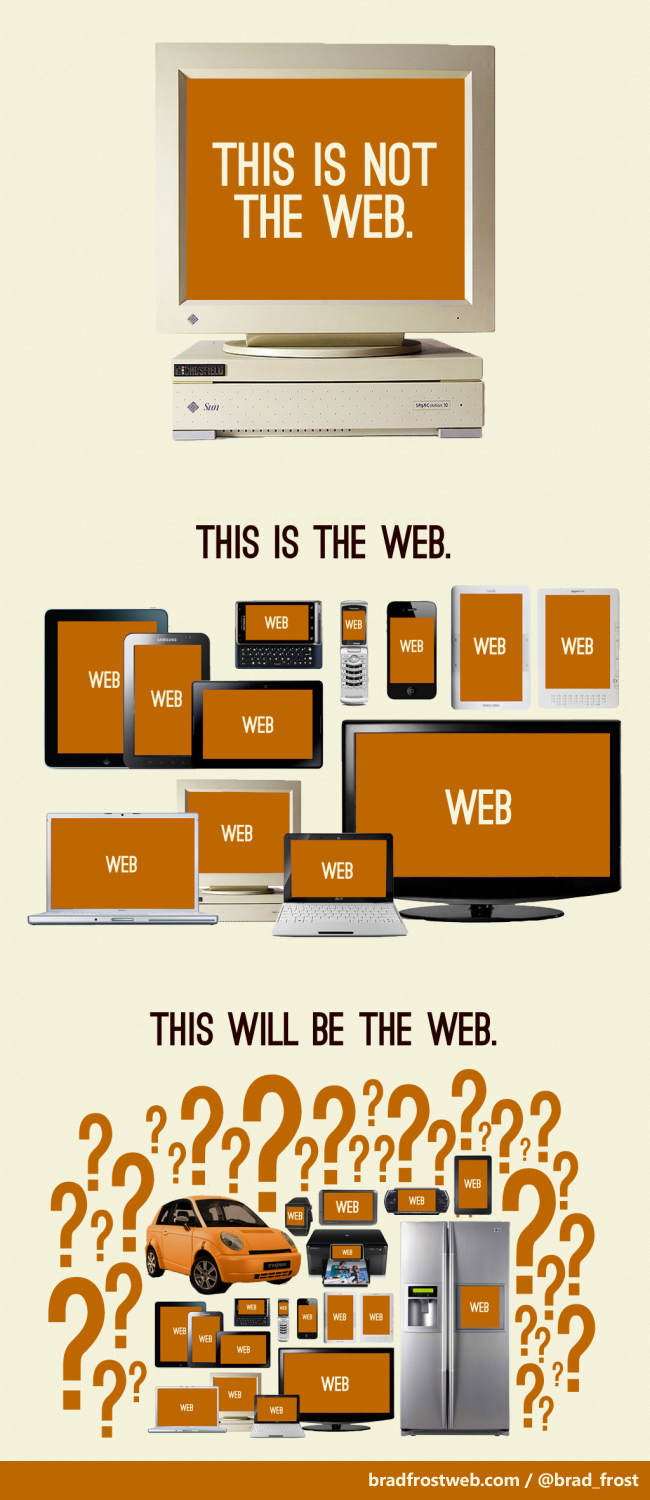Maximize Content with Responsive Design
2 Min Read
Responsive design (aka the internet swiss army knife) has become the latest trend in website development. When most people think about responsive web design, they focus on popular device sizes and their breakpoints. Those are important components, but that’s not really the right strategy. We need to focus on having a dynamic content strategy.
There’s been a recent influx of articles by Luke W and Marcotte about responsive design, breakpoints/viewports & content. It’s important to note that for a design to be considered responsive, it must meet three criteria. That’s it, just three:
1. A fluid or flexible grid;
2. Flexible images and media;
3. Media queries.
Marcotte recently wrote, “…responsive design’s emphasis on screens isn’t a liability, or a risk…unless we stop there.” The last four words are key to his statement and part of the strategy you should be taking with your responsive design/dev project.
Unfortunately, many designers (and developers) still have the wrong impression. We sit, crossing our fingers, hoping that the next popular device has a resolution that fits within the constraints (breakpoints) we’ve given ourselves. But the truth is, even though it’s much easier to focus on static resolutions, we really need a dynamic content strategy that enhances the user’s experience, too. Responsive design is an amazing tool, but it is ONLY a tool. It is up to us to use it effectively.
Here are three ways to make the most of your content with responsive design:
1. Design for consumer behavior.
What content on your site is most important to your customers (not you)? Does it change from desktop to mobile? Rather than guess, consistently review your site analytics to see how visitors behave. Focus on what the customer is looking for, and make it a priority on their screen. Find whatever they like to do, and make it easy for them to accomplish.
2. Don’t oversimplify the site.
Less information is not always more, and more information doesn’t have to be cluttered. If your clients want manufacturer location, shipping information, company mission, or reviews make them easily accessible. If these things don’t matter, don’t go by the common standard. Customers don’t want a watered down experience, they want a seamless experience. Identify your content, then make your design user friendly. No more, no less.
3. Break wisely.
At what point does resolution create or eliminate the optimal experience for your content? Don’t just change it because you have the opportunity. Remember, at every phase you should be optimizing the customer experience.
Photo via Seoron
